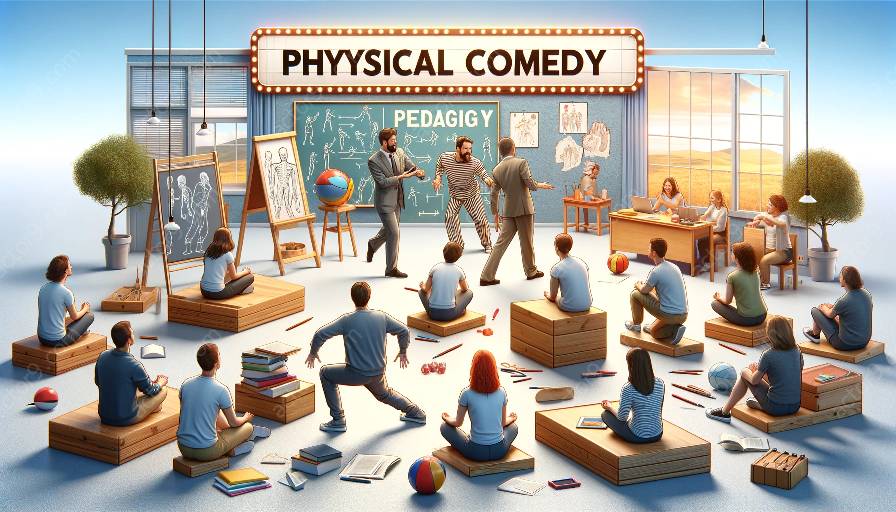Physical comedy is a timeless and universal form of entertainment that transcends language barriers and cultural differences. It relies on exaggerated movements, facial expressions, and gestures to elicit laughter and engage the audience. This article explores the art of physical comedy, the use of exaggeration, and its compatibility with pedagogy and mime.
Understanding Physical Comedy
Physical comedy, often associated with slapstick humor and clowning, is a form of comedic performance that emphasizes bodily movements and actions to create humor. It can range from subtle gestures to extravagant acrobatics, and its success is heavily reliant on the performer's physical prowess and timing.
The Use of Exaggeration
Exaggeration is a fundamental element of physical comedy, where actions and reactions are amplified to absurd levels to generate comedic effect. By accentuating everyday movements or emotions, performers can elevate ordinary situations into hilarious scenarios, capturing the audience's attention through larger-than-life expressions and gestures.
Techniques of Exaggeration
One of the most common techniques of exaggeration in physical comedy is the use of caricature, where the performer magnifies specific traits or mannerisms to create a comically distorted version of reality. This allows them to play with stereotypes and archetypes, effectively conveying exaggerated characteristics that resonate with the audience.
Exaggeration also extends to the physical aspects of performance, such as slapstick and pratfalls, where performers intentionally engage in over-the-top movements and stunts, often defying the laws of physics to entertain and surprise the audience.
Impact of Exaggeration in Pedagogy
Within the realm of pedagogy, the use of exaggeration in physical comedy can be an effective tool for educators and trainers. By incorporating exaggerated movements and expressions, educators can capture their students' attention, enhance learning retention, and create a dynamic and engaging learning environment. The use of exaggeration can help convey complex concepts in a memorable and entertaining manner, making it an invaluable tool for educational settings.
Physical Comedy and Pedagogy
The principles of physical comedy can be seamlessly integrated into pedagogical practices, fostering an environment that promotes creativity, expression, and effective communication. By embracing the principles of exaggeration, educators can inspire their students to think outside the box, encourage imaginative expression, and foster a sense of playfulness and spontaneity within the learning process.
Furthermore, physical comedy can serve as a powerful tool for breaking down barriers and connecting with diverse audiences, making it an invaluable asset for educators looking to create inclusive and engaging learning experiences.
Mime and Physical Comedy
Mime, often synonymous with physical comedy, shares a close relationship with the art of exaggeration. As a form of silent performance art, mime relies heavily on exaggerated gestures, expressions, and movements to communicate narratives and emotions without words.
The synergy between mime and physical comedy lies in their shared reliance on nonverbal communication and the creative use of the body as a means of expression. Both art forms showcase the power of physicality and the intricate ways in which exaggerated movements can transcend language barriers and cultural differences to evoke laughter, emotion, and connection.
The Universal Appeal of Physical Comedy
Physical comedy, with its use of exaggeration, transcends cultural boundaries and has a universal appeal that resonates with audiences across the globe. Its ability to communicate through purely physical means makes it accessible to diverse audiences, making it a valuable form of entertainment, education, and expression.
Whether it's through slapstick, clowning, or mime, the art of physical comedy continues to captivate and delight audiences, proving that the language of laughter knows no borders.


























